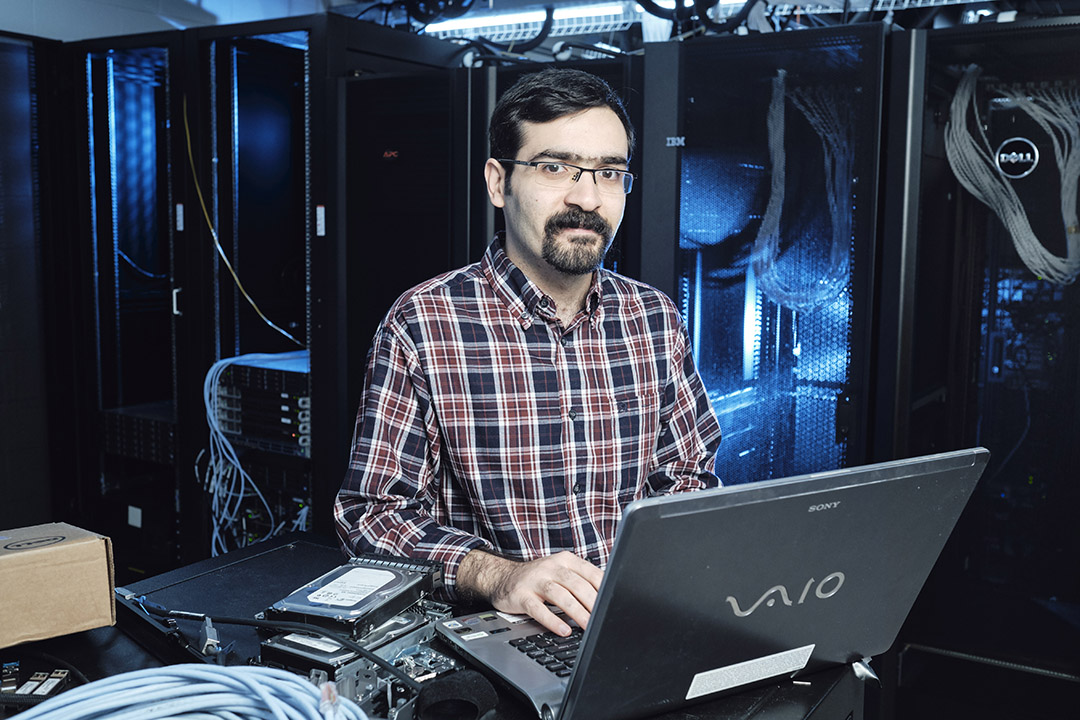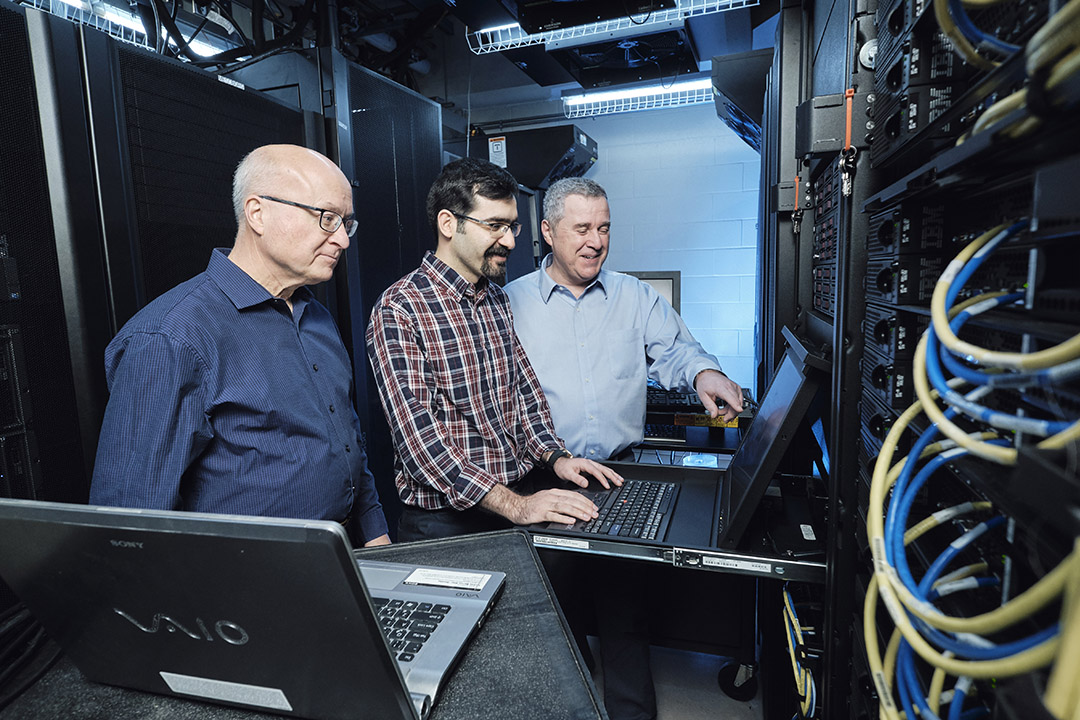
Computer simulations may improve clean energy production
USask researchers' virtual simulations could help companies save time and tens of thousands of dollars for large-scale testing.
By Federica GiannelliUniversity of Saskatchewan researcher Dr. Reza Haghgoo (PhD) has developed a novel computer model to help engineers design more efficient equipment used across the energy sector for producing chemicals including syngas, a clean energy source with the potential to replace natural gas in generating electricity.
Syngas — a mixture of hydrogen, carbon monoxide and carbon dioxide — is a cheaper alternative to fossil fuels and is produced in refinery equipment called fluidized beds. Syngas is a growing industry, especially in Asia and Australia. The gas helps refine other chemicals — as of 2014, 25 per cent of ammonia and over 30 per cent of methanol worldwide was produced using syngas.
“The current production process in fluidized beds is not very efficient and our research tackles that,” said Dr. Raymond Spiteri (PhD), a USask computer science professor and Haghgoo’s former co-supervisor.
Haghgoo’s computer model creates virtual simulations that could help companies save time and tens of thousands of dollars for large-scale testing because engineers would know in advance whether their fluidized bed design is practical or whether it doesn’t work.
He said it is extremely difficult, time-consuming and prohibitively expensive to obtain actual measurements inside industrial-scale fluidized beds, where millions of particles interact at the same time. Haghgoo’s simulations have the advantage of studying overall particle flows instead of looking at the behaviour of individual particles.
The findings, part of Haghgoo’s PhD project, are published in Particuology, Powder Technology and the International Journal of Multiphase Flow.

“Reza’s research contributions have positioned us at the forefront of gas-particle simulation research in Canada and the world,” said Dr. Donald Bergstrom (PhD), USask mechanical engineering professor and Haghgoo’s former co-supervisor.
Inside fluidized beds, particles of coal or biomass — plant or animal-derived waste — react with air at high pressure and temperature in intense mixing zones that synthesize syngas. Because particle flows are very chaotic and unpredictable, understanding how they behave inside fluidized beds is key to designing more efficient equipment.
A combination of physics and advanced computational methods, Haghgoo’s virtual simulations of particle flows accurately predict the complex and constantly changing conditions of these flows in fluidized beds. His simulations match the results of three previous studies based on experimental testing.
“The better the mixing rate of air and particles, the more efficiently the fluidized bed will operate,” said Haghgoo, now a post-doctoral fellow in mechanical engineering originally from Iran.
Many industrial processes use fluidized beds across the resource and energy sector, and Haghgoo’s research could be especially important for processing potash in Saskatchewan.
During the USask-sponsored AIMday™ Big Data event, where companies raise technological challenges and issues with researchers to find solutions, Haghgoo’s team met with officials from a potash company to discuss a potential collaboration involving the use of Haghgoo’s computer model to optimize the company’s fluidized bed technology for potash production.
“Reza’s computer model could be also used for predicting pneumatic transport in air seeders, slurry flow in pipelines, or sediment deposition in rivers. I am extremely excited about future applications,” said Bergstrom.
The research was funded by the federal agency NSERC and Carbon Management Canada.
Federica Giannelli is a graduate student intern in the University of Saskatchewan research profile and impact unit.
This article first ran as part of the 2018 Young Innovators series, an initiative of the U of S Research Profile and Impact office in partnership with the Saskatoon StarPhoenix.

